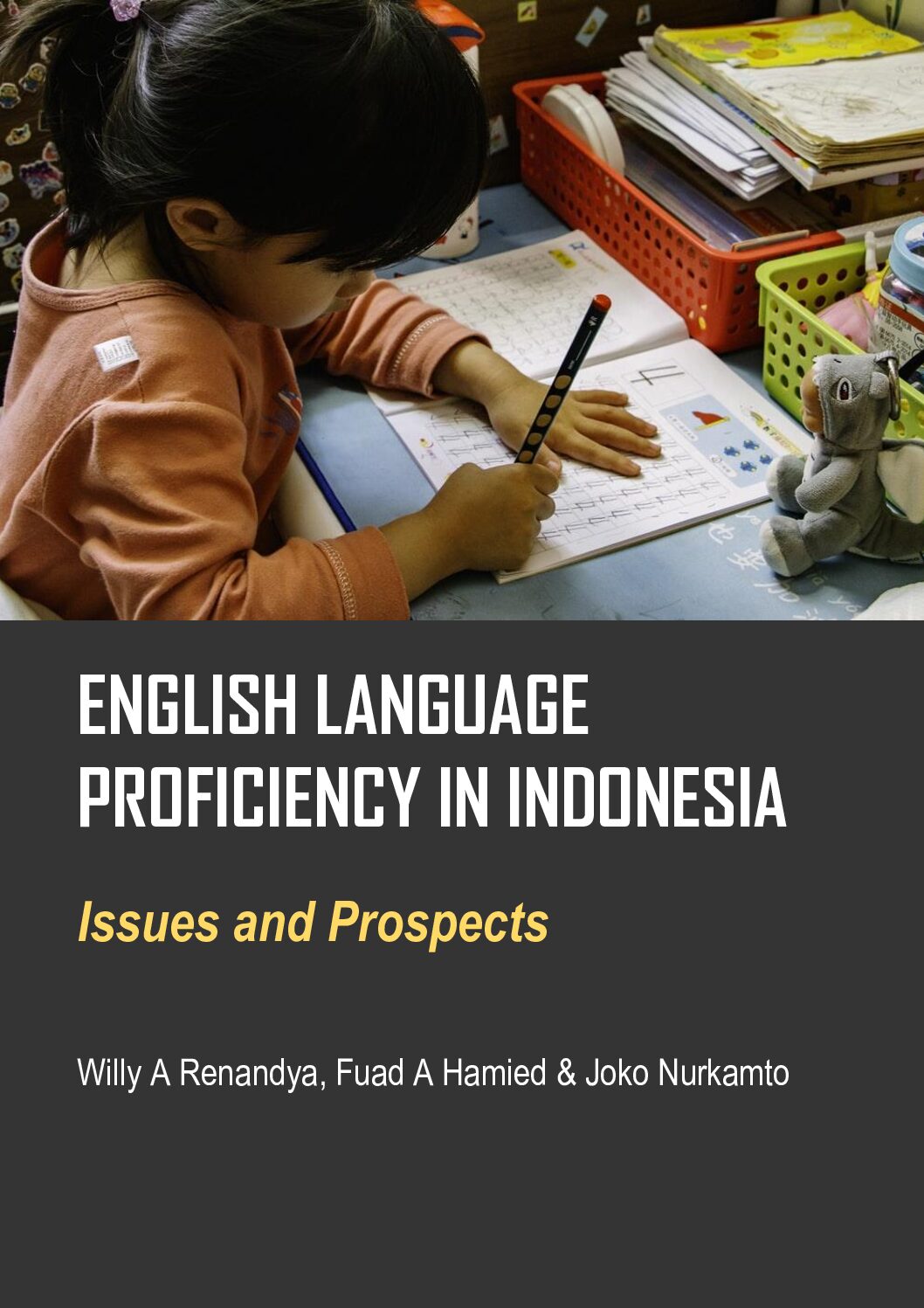English Language Proficiency in Indonesia: Issues and Prospects
Willy A Renandya, Fuad A Hamied and Joko Nurkamto
Abstract
In this article, we discuss key issues about English language proficiency in Indonesia, focusing in particular on the level and kind of proficiency that English language teachers need to have to support their classroom teaching. We first define the concept of proficiency and how it is usually measured, and then present some data about teachers and students’ English language proficiency in Indonesia and the Asian region. The next section discusses research that helps us understand why a threshold of proficiency is required for effective teaching. As many teachers may not have reached a level of proficiency considered sufficient for effective teaching, we then discuss key theoretical principles from SLA that can be used as a basis for developing a training programme to help raise teachers’ proficiency. We conclude by calling all stakeholders (i.e., policy makers, language education providers and professional associations) to work together and find ways to support teachers in their effort to acquire a higher level of proficiency in English.
What is Language Proficiency?
Broadly speaking, language proficiency refers to one’s ability to use language for a variety of communicative purposes. Proficient users are said to have a good command of the language, i.e., they can understand the language without difficulty, express a range of ideas clearly in speech and writing, and interact with other speakers comfortably. Five performance indicators are usually used to assess language proficiency, i.e., accuracy, fluency, complexity, appropriacy and capacity (Richards, 2018).
Accuracy refers to the ability to produce language correctly in terms of pronunciation, vocabulary and grammar. We score high on this indicator if our speech or writing is free of language errors. Fluency refers to the ability to express ideas smoothly and to use language resources to sustain the flow of our communication and avoid communication breakdowns. In writing, fluency is demonstrated by our ability to organize our ideas coherently so that they flow nicely together.
Complexity refers to our ability to use complex language i.e., whether we are able to use a wide range of vocabulary and grammar. An advanced level speaker uses a wider variety of vocabulary and sentence structures, unlike a beginner level speaker whose speech is characterized by the use of simpler language. Appropriacy is about whether the language we use is relevant and appropriate for the purpose, audience and context of the situation.
Finally, capacity refers to how much of what we know can be used to discuss and write about a variety of topics in various settings (formal or informal) and with what levels of sophistication (superficial or deep). In the classroom context, capacity refers to the extent to which a teacher is able to make full use of their target language proficiency to explain, give examples, select relevant teaching materials, model correct language use and provide effective feedback on student performance.
Based on these performance indicators, people’s communicative competence can be described along a range of proficiency levels, for example: elementary, intermediate or advanced. For instructional and assessment purposes, each level may be further broken down into several sub levels. Thus the elementary level can be subdivided into pre-elementary, elementary and post- elementary levels. Commercial language teaching providers usually use this classification for instructional and certification purposes.
A well-established and internationally recognized language proficiency framework is CEFR (Common European Framework of Reference). CEFR has been used as a broad guideline to describe the language abilities of learners of foreign languages (English being one of these languages) across Europe. More recently, the framework has been adopted, with some modifications, for use as a proficiency standard for both English teachers and students in the region including Malaysia, Thailand and Vietnam. Interestingly, CEFR has been used by foreign language programmes in universities in Indonesia (e.g., French language teaching), but it has yet to gain currency in English language teaching. Many ELT professionals in Indonesia are familiar with standardized proficiency tests such as TOEFL and IELTS, but only a few have heard about CEFR.
The framework describes proficiency in terms of three broad categories: Basic user, Independent user and Proficient user. Each category is divided into two sub levels (See Appendix 1). The descriptors of each of the subscale provide information about what people can do with the language and with what levels of sophistication. A Basic User at the A1 level for example can use the language to meet very basic communicative needs such as giving simple introductions and asking and answering questions about personal details. At the other end of the scale, a highly Proficient User at the C2 level can understand complex information from various sources and express a wide range of communicative needs fluently and accurately using appropriate and complex language where relevant.
To continue reading, download the whole article here.
To find out more about how you can help your students become more successful learners of English, see links below:

